Spinal cord injury (SCI) is produced most often by a traumatic injury that bruises and partially tears the spinal cord tissue. The lesion causes temporary or permanent changes in sensation, movement, strength, and autonomic body functions below the level of injury. PsychoGenics characterized a rat model of thoracic SCI with different lesion severities by contusing the spinal cord with different forces (170 to 250 Kdyn).
Gross Locomotor Changes Assessed by Basso Beattie Bresnahan (BBB) Locomotor Scale
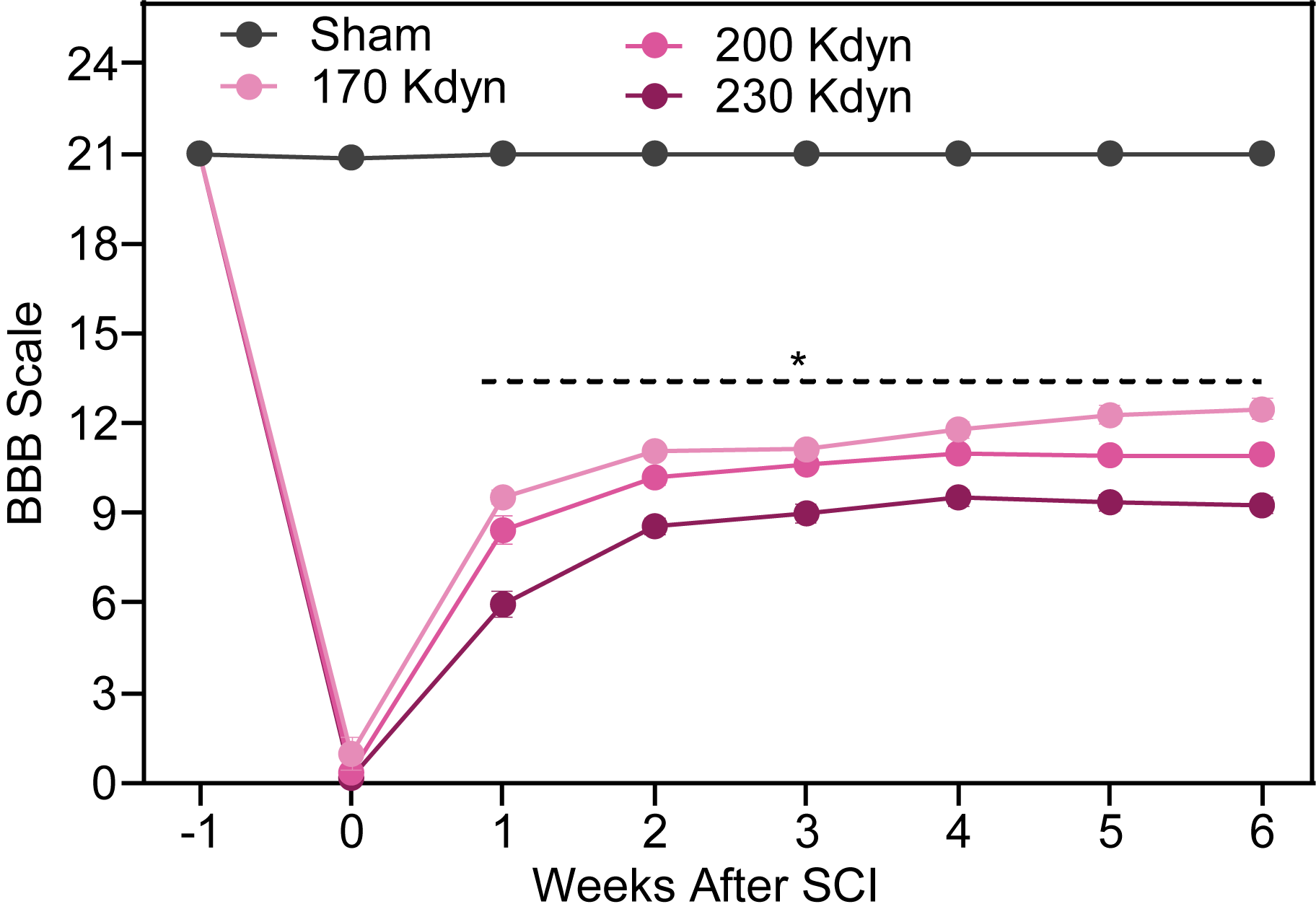
Locomotion score changes from 21 (naïve animals) to 0 (no movement) after lesion. Locomotor function recovers and plateaus around 4-6 weeks post-injury; however, animals do not fully recover to baseline locomotion levels.
Fine Locomotor Changes Assessed by the Ladder Test
While the animals walk on a ladder with irregular rung spacing, the number of front limb and hind limb errors are quantified.
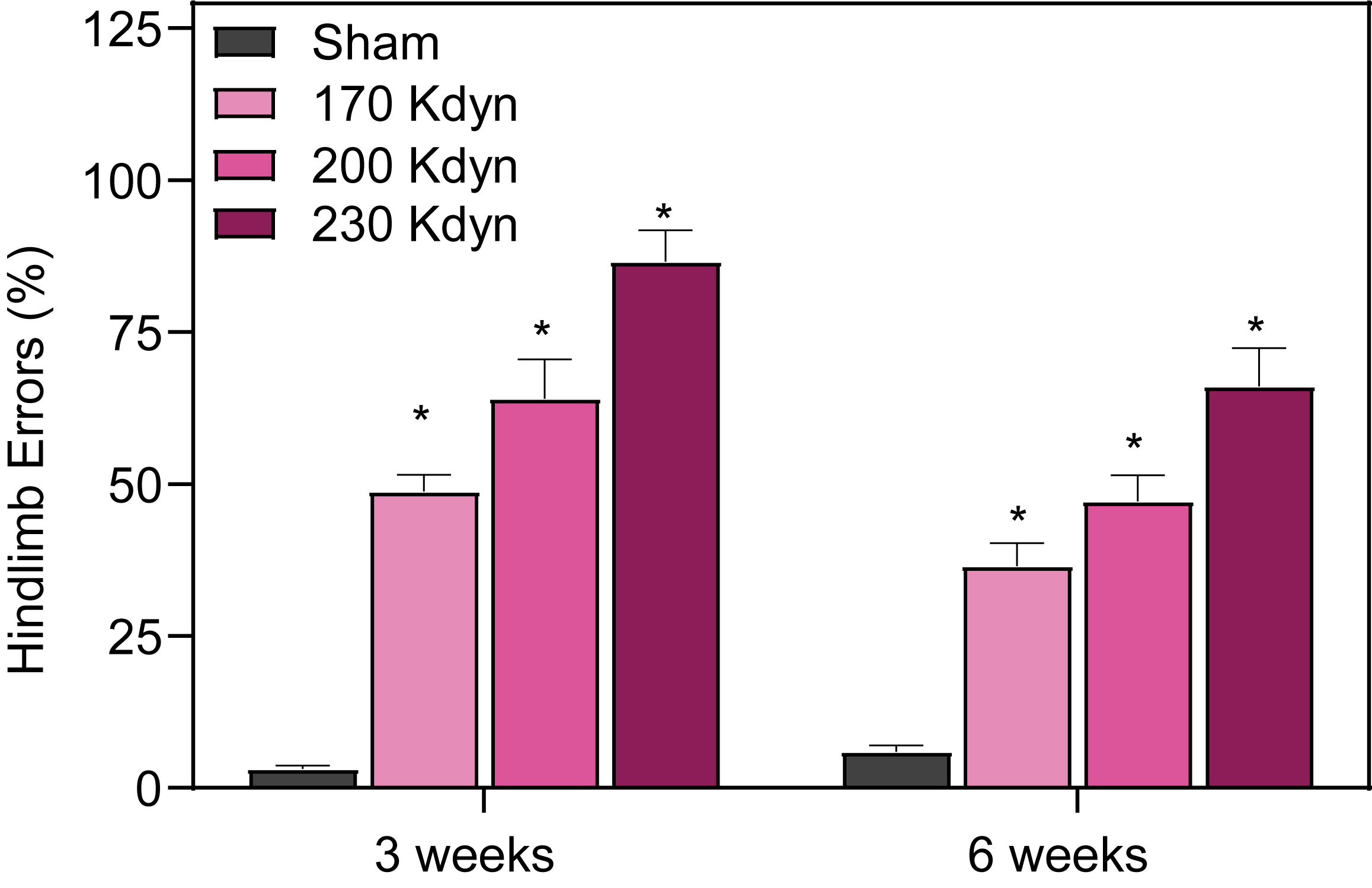
Hind limb errors in SCI rats increase with increased severity of the lesions at 3 and 6 weeks post-injury. Sham animals perform well in this test with a few errors.
Gait Deficits in SCI Rats
Gait changes were evaluated using the NeuroCube System, a proprietary automated gait analysis platform. Changes in gait were seen in SCI rats at 6 weeks post-injury.
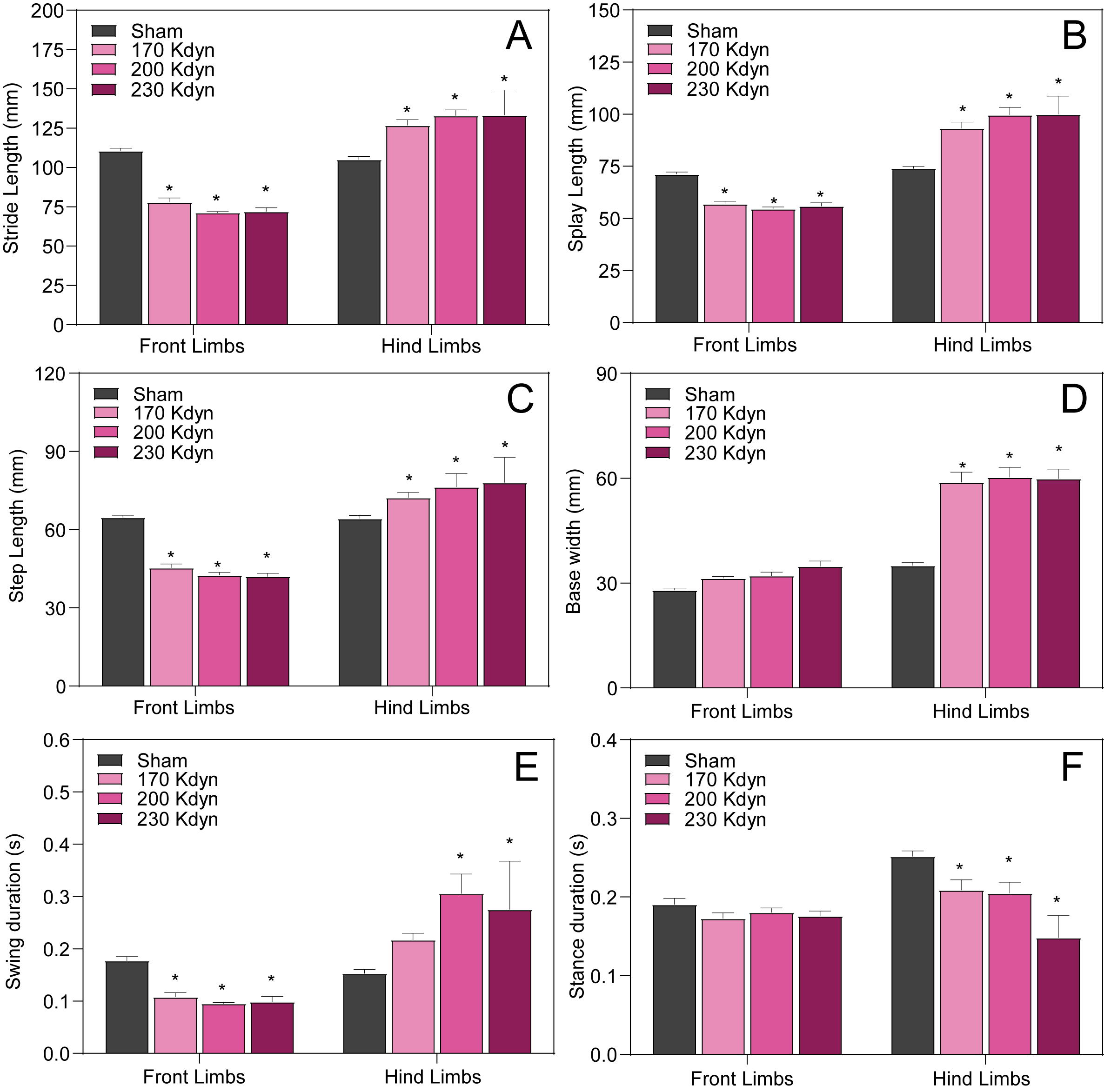
SCI rats show abnormalities in gait geometry (A, B, C, D) measures as well as gait dynamic measures (E, F).
Bladder Expression
After SCI, animals exhibit loss of bladder function requiring manual bladder expression.
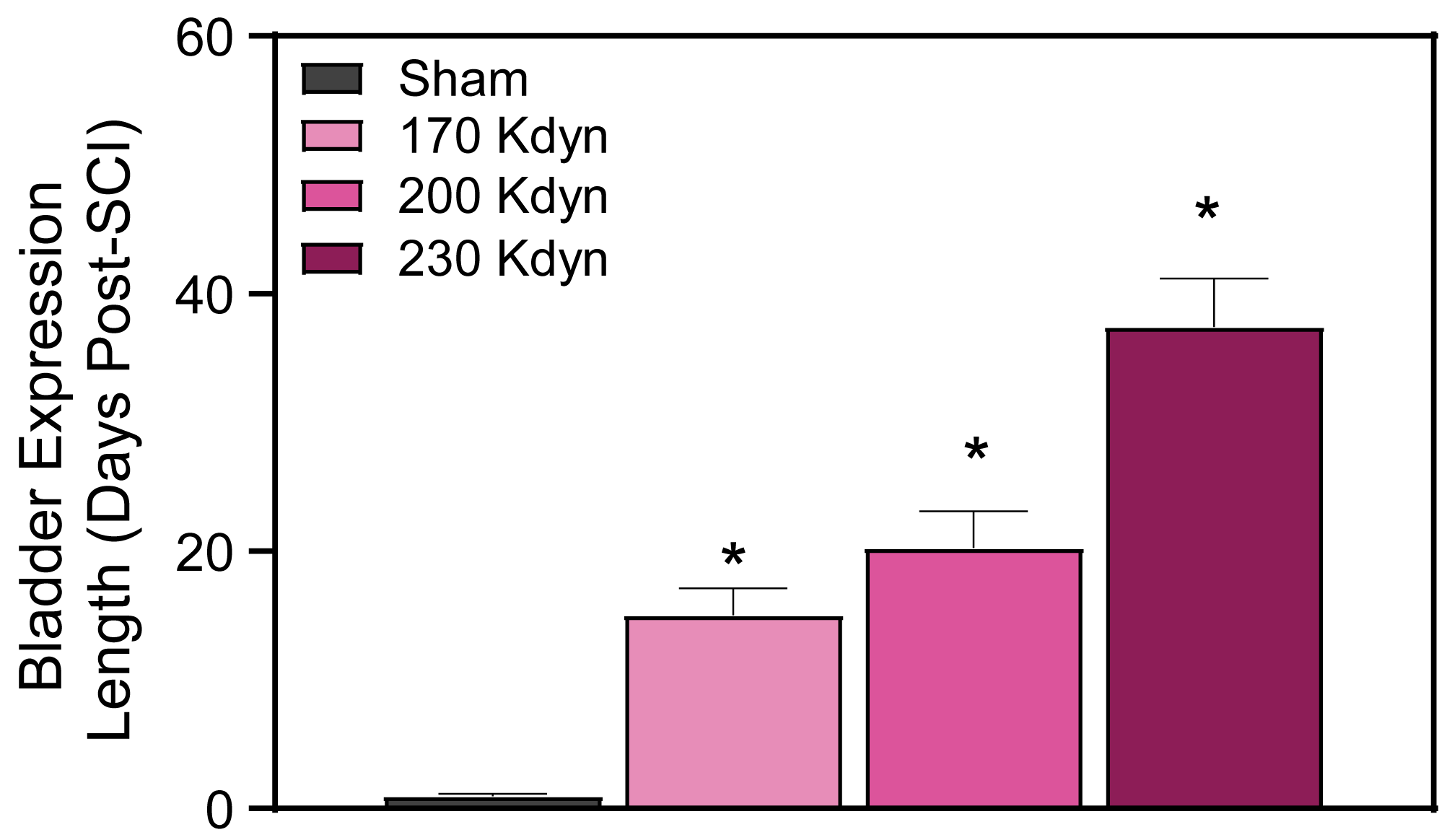
Bladder function recovers in most animals with milder injury (170 -200 Kdyn) by day 20-30 after SCI.
Lesion Size
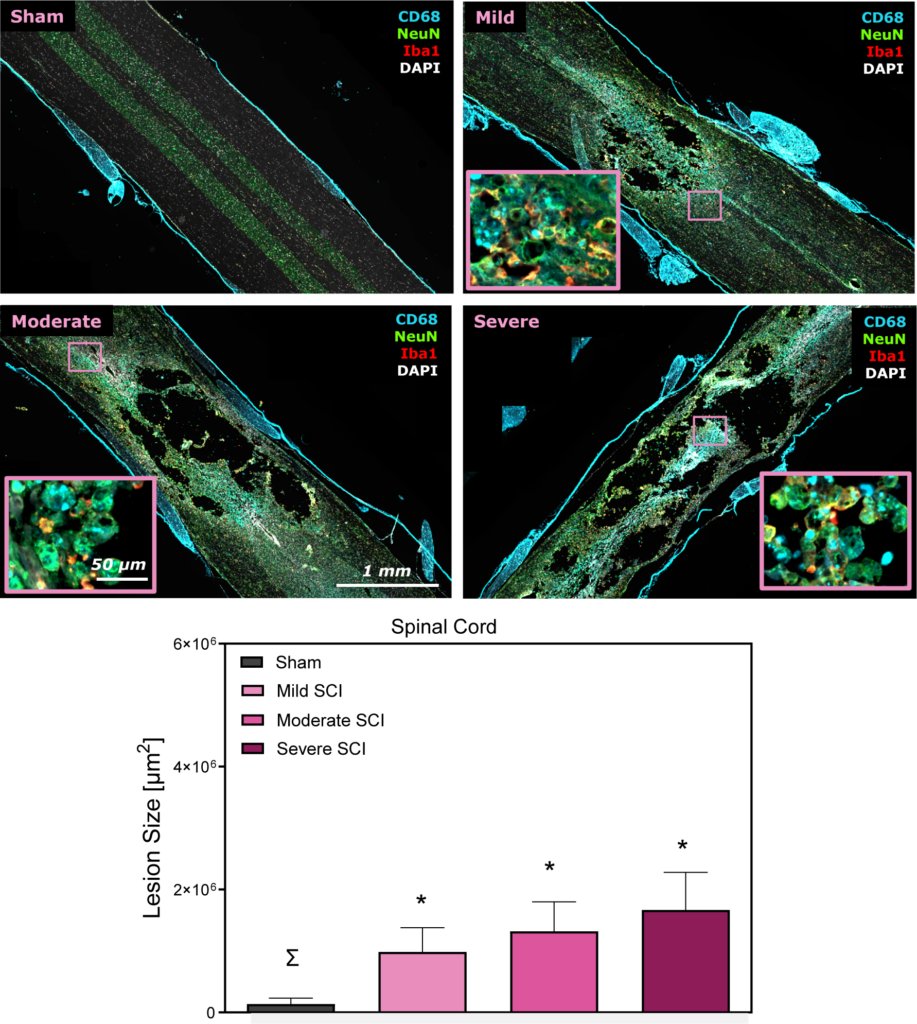
Top: Neun Labeling in spinal cord shows increased neuronal loss with increased severity of the injury. Bottom: Lesion size significantly increases with increasing contusion force.